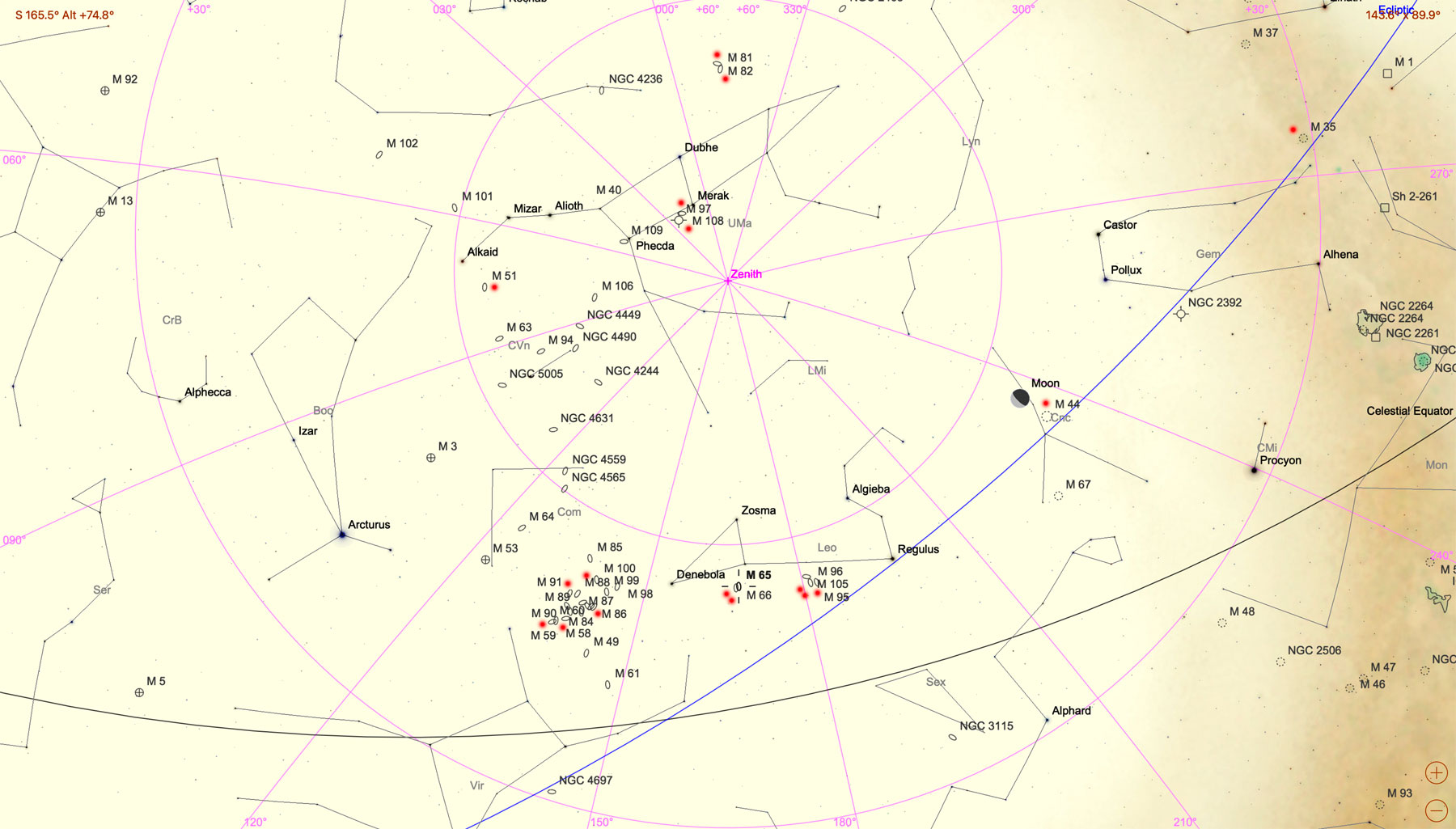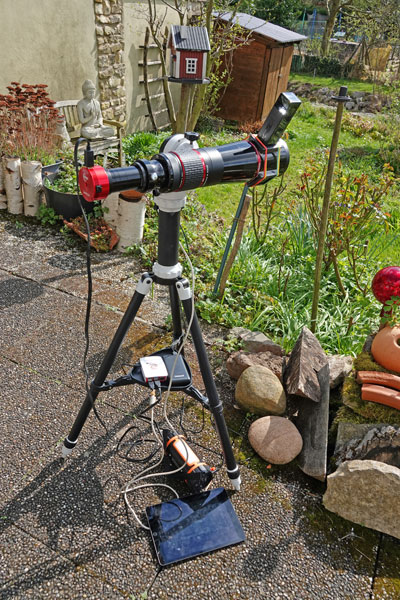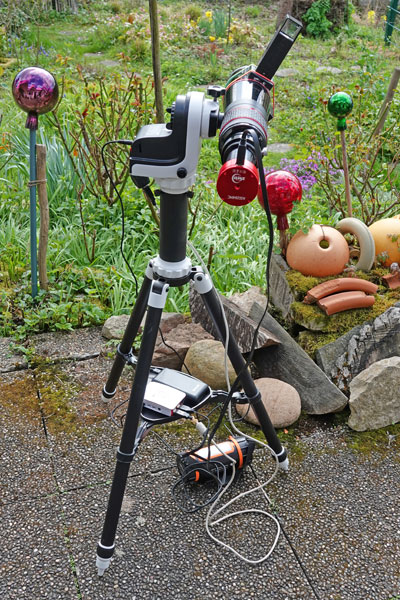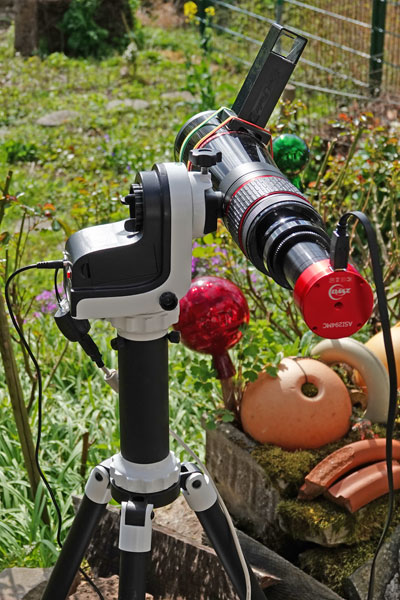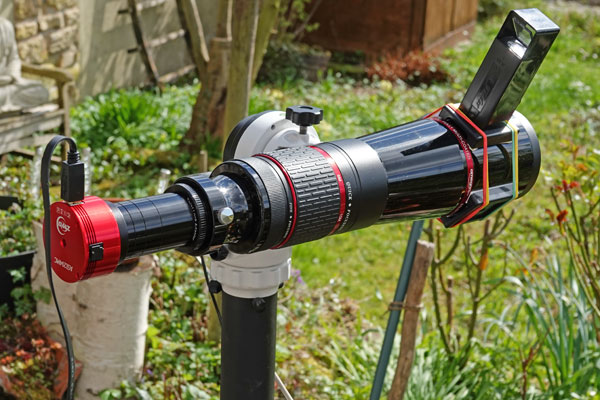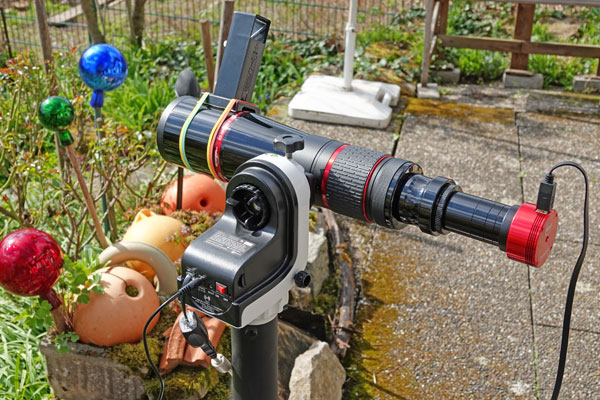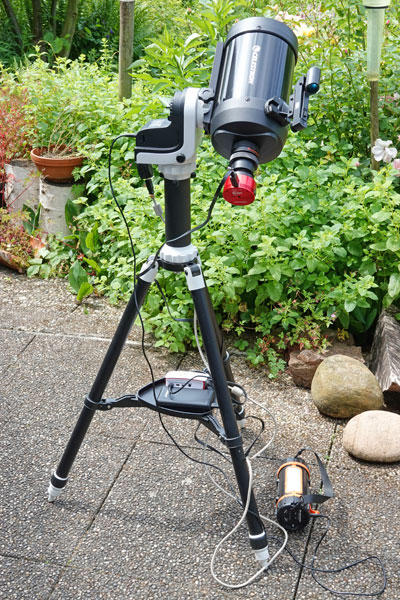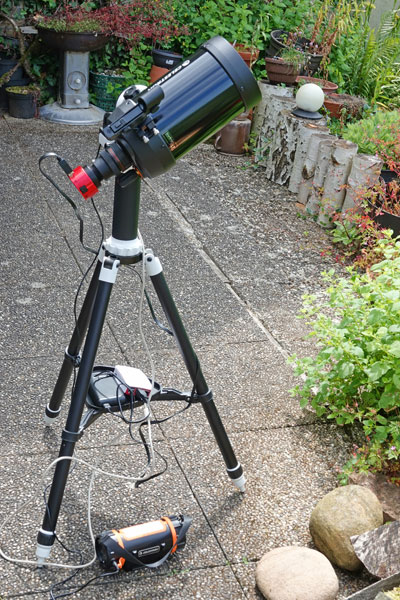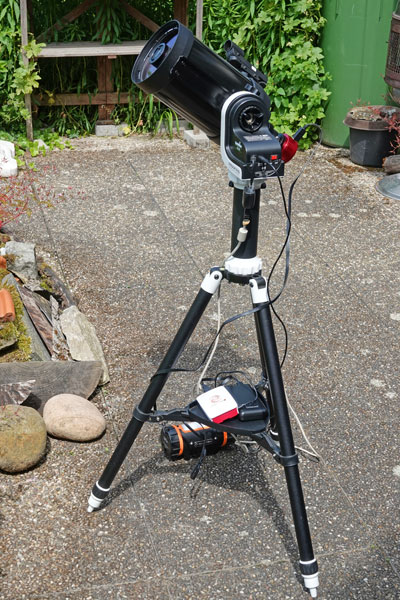Deep Sky Observations with ZWO ASI294MC 2022
Conditions | Observation Overview | Overview of the Observed Sky Objects | Remarks | References
Archive
At the end of March 2022, I borrowed a ZWO ASI294MC from a starfriend, but sent it back to him at the beginning of April, 2022, after one use only. The reason was that I was able to acquire a used ASI294 on April 5, 2022 (these seem hard to get at). The following tests took place in spring 2022 and were rather StellarMate tests than tests of the camera. The photos that were taken during this phase and contains several galaxies are presented elsewhere (on the galaxy page for the ASI294 and on a StellarMate page (see links below)).
Conditions
Sky Region and Objects
I looked mostly into sky regions that mainly present galaxies: Virgo, Leo, Canes Venatici, Ursa Major. In summer, I looked more in the direction of Bootes and Ophiuchus.
Overview Map
Click the map for a larger version - it opens in a new window (Image Courtesy of SkySafari Astronomy, www.simulationcurriculum.com)
Observation Time
The observations started every day when it was sufficiently dark (typically after 9 p.m.).
Observation Location
The observations took partly place in Mühlhausen/Kraichgau (Germany) ...:
- Coordinates: 49° 15′ N , 8° 43′ E
- Coordinates (dec.): 49.25° N, 8.72° E
... and partly in Erkerode (near Braunschweig, Germany):
- 52° 12' 27.2" N 10° 42' 52.9" E
- 52.207556° N, 10.714696° E
Equipment Used
StellarMate Astronomy Computer with Camera, GoTo Mount, and Power Supplies, iPad running the StellarMate App
First of all, the ASI224MC camera is needed for taking photos. You also need a GoTo mount and a power supply, typically a power tank. The StellarMate can also be powered from a PowerTank or from a PowerBank. It also provides the power for the camera (if it is a 5V camera like the ASI224). The camera and the mount can be connected to the StellarMate astronomy computer, which is controlled by the StellarMate app running on an iPad (tablet computer).
Telescope Tubes, Focal Reducer
Last, but not least, you need a telescope. Depending on the telescope tube used, focal length reducers have also to also be used. This is indicated for the respective observations.
PS 72/432
To be able to get into focus with the camera, I used T2 extension sleeves (Explore Scientific). |
Photos: PS 72/432 with ASI294 camera and StellarMate (spring 2022)
C5
Photos: C5 with ASI294 camera and StellarMate (spring 2022)
ZWO ASI294: The FOV is about 2.5° x 1.7° for the PS 72/432 and about 1.4° x 0.95° for the C5 with f/6.3 Reducer/Corrector.
General Conditions
In general, the sky above Mühlhausen/Kraichgau is "light-polluted" and does not invite you to search for deep sky objects. Cameras will find the objects even in poor conditions, but really good results are obtained only under dark skies. In Erkerode, the sky is a little bit darker.
Observation Overview
Observation Details
| Date 2022 |
Observed Objects | Further Observations and Remarks | Devices Used | Reducers Used | General Remarks |
| Apr 3 MH |
OC: NGC 2244 G: M 51, M 65, M 66, M 81, M 82, M 95, M 96, NGC 3628 |
Order: M 81/82, M 65/66/NGC3628 (Leo triplet; M 65 accessed) found in second attempt, NGC 2244, M 51, M 95/96 | PS 72/432 on AZ-GTi with ASI294MC*, StellarMate *)borrowed |
--- | The ASI294 was vignetting; the stacked photos were saved with 1920 x 1308 pixels (obviously caused by the Live Stacking), although the correct pixel size was shown in the StellarMate app. > Valid for all observations! |
| Apr 18 MH |
OS: M 44, NGC 2238 G: M 51, M 59, M 60, M 65, M 66, M 81, M 82, M 84, M 86, M 89, M 90, M 105, M 108, IC 3483, NGC 3077, NGC 3268, NGC 4567/68 PN: M 97 |
Order: NGC 2238 (Rosette Nebula), M 65 (+ M 66, NGC 3628; Leo Triplet), M 81 (+ M 82, NGC 3077), M 96 (+ M 95), M 105, M 84 (+ M 86; great galactic Face), M 51, M 108 (+ M 97), M 60 (+ M 59), M 44 (Coma Berenice Cluster), IC 3483 (Zwicky's Triplet), NGC 4567/68 (Siamese Twins), M 89 (+ M 90) | PS 72/432 on AZ-GTi with ASI294MC, StellarMate | --- | Notes
|
| Apr 28 Erk |
G: M 51, M 59, M 60, M 65, M 66, M 81, M 82, M 84, M 86, M 87, M 89, M 99, M 105, M 108, NGC 3077, NGC 3268, NGC 4567/68 PN: M 97 |
Order: M 81 (+ M 82, NGC 3077), M 65 (+ M 66, NGC 3628; Leo Triplet), M 105, M 84 (+ M 86; Markarian's Chain; great galactic Face), M 87, M 89, M 99, M 59 (+ M 60), M 108 (+ M 97) | PS 72/432 on AZ-GTi with ASI294MC, StellarMate | --- | Notes
|
| May 30 MH |
G: M 65, M 66, NGC 3628 | Order: M 65 (+ M 66; 10 s, 5 s, 2,5 s, 10 s), NGC 3628 | C5 on AZ-GTi with ASI294MC, StellarMate | f/6,3 R/C | Often, the image of M 65/66 was "destroyed" by StellarMate after having stacked about 4 times! With NGC 3628, I reached the 9th frame.
All in all, a disappointing evening, but the proof that the C5 works as well (best with an exposure time of 10 s)! |
| Jul16 MH |
GC: M10 C: C/2017 K2 (PANNSTARS) |
Order: M 10 without and with comet C/2017 K2 (PANNSTARS) (10 s, 1 s 5 s) | PS 72/432 on AZ-GTi with ASI294MC, StellarMate | --- | Tried to photograph M 10 and comet C/2017 K2 (PANSTARRS) with StellarMate, PS 72/432 and ASI294; first failed to find the comet, then never managed to reasonably capture both (1° apart) together on one photo.... |
Bold: First observation during this observation period; G = galaxy, GH = galaxy cluster, OC = open star cluster, GC = globular star cluster, P = star pattern, DN = dark nebula, GN = galactic nebula, PN = planetary nebula
Overview of the Observed Sky Objects
Object details can be obtained via the links to the deep sky objects in question. Due to the large field of view, especially with the PS 72/432, often several galaxies appear on one photo. Even more galaxies can be identified by evaluating the photos with nova.astrometry.net!
|
DSO-Details
|
Name | Sternbild | Typ | Tubus | Bemerkungen |
| C/2017 K2 | C/2017 K2 (PANNSTARS) | --- | K | PS72 | Not on the image or only at the edge of the image |
| M 10 | Ophiuchus | KS | PS72 | Looks fairly small in this configuration | |
| M 44 | Coma Berenices Cluster | Coma Berenices | OC | PS72 | Fits the image well with PS72/ASI294 |
| M 51 | Whirlpool Galaxy, with NGC 5195 | Canes Venatici | G | PS72 | Small |
| M 58 | Virgo | G | PS72 | Small, together with M 89/90 | |
| M 59 | Virgo | G | PS72 | Small, together with M 60 | |
| M 60 | Virgo | G | PS72 | Small, together with M 59 | |
| M 65 | Leo | G | PS72, C5 | Small, together with M 66 and sometimes also with NGC 3628 (Leo Triplet) | |
| M 66 | with M 65 | Leo | G | PS72, C5 | Small, together with M 65 and sometimes also with NGC 3628 (LeoTriplet) |
| M 81 | Bode Galaxy | Ursa Major | G | PS72 | Small, together with M 82, auch mit NGC 3077 |
| M 82 | Cigar Galaxy | Ursa Major | G | PS72 | Small, together with M 81, auch mit NGC 3077 |
| M 84 | Virgo | G | PS72 | Together with M 86, NGC 4402 and NGC 4387 as Great Galactic Face | |
| M 86 | Virgo | G | PS72 | Together with M 84, NGC 4402 and NGC 4387 as Great Galactic Face | |
| M 87 | Virgo | G | PS72 | Cengter of the Virgo Galaxy Cluster, many more galaxies on the photo | |
| M 89 | Virgo | G | PS72 | Together with M 90 and NGC 4567/68, partly also with M 58 | |
| M 90 | Virgo | G | PS72 | Together with M 89 and NGC 4567/68,partly also with M 58 | |
| M 95 | Leo | G | PS72 | Together with M 96, sometimes also with M 96 and M 105 | |
| M 96 | Leo | G | PS72 | Together with M 95 and sometimes also with M 105, sometimes with both of them... | |
| M 97 | Owl Nebula | Ursa Major | PN | PS72 | Sometimes together with M 108 on the photo |
| M 99 | Coma Berenices | G | PS72 | Small, together with NGC 4298/4302 | |
| M 105 | Leo | G | PS72 | Small, together with M 96 | |
| M 108 | Ursa Major | G | PS72 | Nearly edge-on; sometimes together with M 97 on the photo | |
| IC 3483 | Zwicky's Triplet | Virgo | G | PS72 | Together with the Siamese Twins NGC 4567/68, M 58, and M 89 |
| NGC 2238/44 | Rosette Nebula | Monoceros | G | PS72 | Only photographed the star clusterNGC 2244 |
| NGC 3077 | Ursa Major | G | PS72 | Irregular galaxy close to M 81/82 (also on the photo) | |
| NGC 3628 | Member of the Leo Triplet | Leo | G | PS72, C5 | Member of the Leo Triplet;photographed alone and together with M 65/66 |
| NGC 4567/68 | Siamese Twins, Butterfly Galaxies | Virgo | PS72 | Tiny and at the edge on my photo... |
G = galaxy, GH = galaxy cluster, OC = open star cluster, GC = globular star cluster, DS = double star, SP = star pattern, DN = dark nebula, GN = galactic nebula, PN = planetary nebula
Remarks
Preparation
When searching for deep sky objects, a good preparation is obligatory - you read this, and I can confirm it. "Good preparation" means, on the one hand, that you compile a list of objects that you want to observe, including notes on where and how to find them.
On the other hand, even when doing "quick astro photography" with the ZWO ASI294MC camera (a variety of "video astronomy") more technology has to be prepared than for purely visual observation, especially if you just put a small Dobson or Maksutov telescope on the terrace table for this... Above, I describe, what equipment I use and need for taking photos with the ZWO ASI294 camera and the StellarMate astronomy computer.
References
Books
- Michael Feiler & Philip Novak (2023). Deep Sky Reiseatlas (5. Auflage), Oculum Verlag (ISBN 978-3-949370-04-5)
www.oculum-verlag.de/detailview?no=608 - Ronald Stoyan (2021). Deep Sky Reiseführer (6. Auflage), Oculum Verlag (ISBN 978-3-938469-72-9)
www.oculum-verlag.de/detailview?no=603 - Erich Karkoschka (2022). Atlas für Himmelsbeobachter, Kosmos Verlag (EAN: 9783440173602)
www.kosmos.de/de/atlas-fur-himmelsbeobachter_1074889_9783440173602
On this Website
- Overview of Observations
- Omegon Photography Scope 72/432 ED OTA Information (2.8" Refractor)
- Celestron C5 OTA Information (5" Schmidt-Cassegrain)
- Sky-Watcher AZ-GTi AZ GoTo Mount Information
- ZWO ASI294 Color Camera - Information
- Ikarus StellarMate Plus - Information
| 28.11.2024 |
